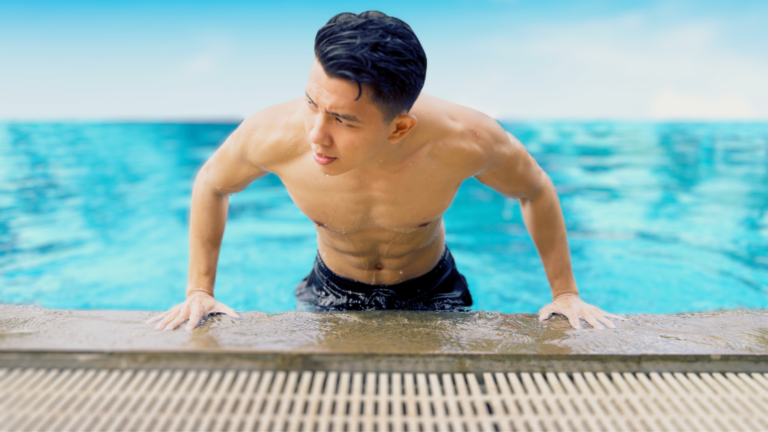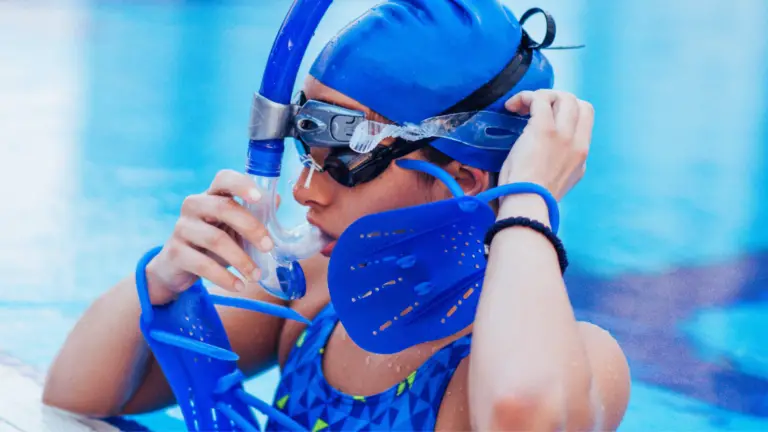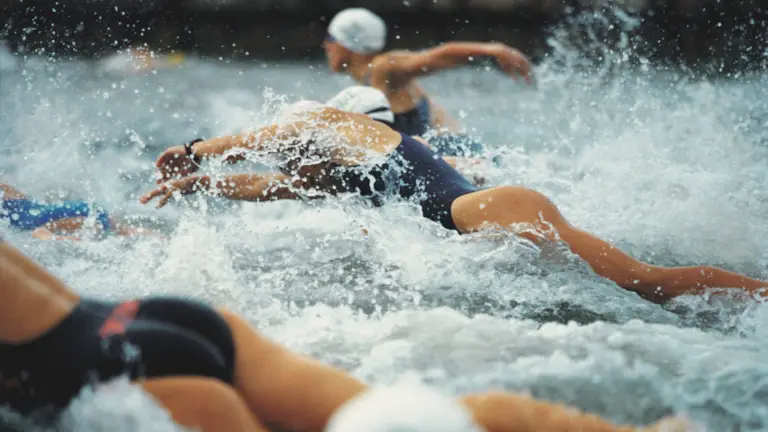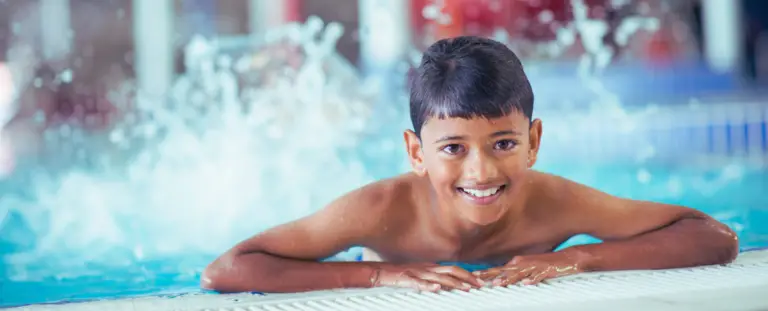As a swimmer, you know that your success in the water is not only determined by the hours spent swimming laps but also by the strength you build outside the pool and in the weight room. Strength training is a game-changer for many swimmers, and in this article, we’ll dive deep into the best strength training exercises for swimmers that can take your swimming performance to the next level. I’ll even leave you with sample workouts so you can get started today!
Why Strength Training for Swimmers Matters
- Enhanced Swimming Performance: The right strength training program can significantly boost your swim times and technique, giving you the edge you need to outperform your competitors.
- Injury Prevention: Strengthening your muscles and joints through targeted exercises can help reduce the risk of common swimming injuries, like shoulder pain.
- Increased Power and Endurance: Building strength helps you generate more force with each stroke, enabling you to maintain speed throughout your races.
- Better Body Positioning: A strong core and glutes contribute to better body alignment in the water, reducing drag and increasing efficiency.
Top 5 Strength Training Exercises for Swimmers
Now that we’ve established the importance of strength training for swimming let’s get into the nitty-gritty of the best strength training exercises that can transform your swimming prowess. Here are the top five exercises every swimmer should incorporate into their training regimen:
1. Pull-ups
Pull-ups are a fundamental bodyweight exercise that targets the muscles in the upper body, particularly the back, biceps, and shoulders. It involves lifting your body weight by pulling yourself up to a bar or other elevated surface.
Benefits
- Pull-ups are an excellent exercise for building upper body strength, which is crucial for a powerful and efficient pulling motion during swimming strokes.
- This exercise also helps develop the muscles responsible for stabilizing the shoulder joints, reducing the risk of injuries in swimmers.
Step-by-step
- Grip an overhead bar with your palms facing away from you, slightly wider than shoulder-width apart.
- Hang with your arms fully extended and engage your core for stability.
- Pull your body up towards the bar by squeezing your shoulder blades together and using your back and arm muscles.
- Continue pulling until your chin is above the bar or as high as you can go.
- Lower yourself back down to the starting position with control and repeat for the desired number of repetitions.
2. Dumbbell Bench Press
The dumbbell bench press is a popular strength training exercise that targets the chest, shoulders, and triceps. It involves pressing dumbbells upward while lying on a flat bench.
Benefits
- The dumbbell bench press helps swimmers build upper body strength, contributing to a powerful arm stroke during swimming.
- This exercise also improves chest and shoulder muscle balance, enhancing overall upper-body stability and coordination.
Step-by-step
- Lie on a flat bench with a dumbbell in each hand, held at shoulder level.
- Press the dumbbells upwards until your arms are fully extended.
- Lower the dumbbells back down to chest level with control.
- Repeat the movement for the desired number of repetitions.
3. Squats
Squats are a foundational lower body exercise that targets the muscles in the thighs, hamstrings, and glutes. It involves bending at the knees and hips to lower your body down and then standing back up.
Benefits
- Squats are highly effective for building lower body strength, which is essential for generating power during starts, turns, and push-offs from walls in swimming.
- This exercise also helps improve hip and ankle mobility, enhancing overall lower body flexibility for better swimming technique.
Step-by-step
- Stand with your feet shoulder-width apart and toes pointing slightly outward.
- Lower your body by bending your knees and pushing your hips back, as if you are sitting back into a chair.
- Keep your chest up and your back straight throughout the movement.
- Lower down until your thighs are parallel to the ground or as low as you can comfortably go.
- Push through your heels to stand back up to the starting position and repeat for the desired number of repetitions.
4. Glute Bridges
Glute bridges are a targeted exercise that isolates and strengthens the glute muscles, which play a crucial role in hip extension and propulsion during swimming.
Benefits
- Glute bridges are effective for building glute strength, which contributes to a more powerful and efficient kick in swimming.
- This exercise also helps improve hip stability and reduce the risk of lower back and hip injuries in swimmers.
Step-by-step
- Lie on your back with your knees bent and feet flat on the ground, hip-width apart.
- Engage your core and glutes and lift your hips off the ground, creating a straight line from your shoulders to your knees.
- Squeeze your glutes at the top of the movement, then lower your hips back down to the ground with control.
- Repeat the glute bridges for the desired number of repetitions.
5. Broad Jumps
Broad jumps, also known as standing long jumps, are a plyometric exercise that involves jumping forward as far as possible from a standing position.
Benefits
- Broad jumps help develop explosive leg power and enhance overall lower body strength, which is crucial for stronger kicks and turns in swimming.
- This exercise also improves coordination and balance, both essential elements for efficient swimming movements.
Step-by-step
- Stand with your feet shoulder-width apart and arms by your sides.
- Lower your body into a half-squat position, then explode upwards and forward, swinging your arms for momentum.
- Land softly on both feet with your knees slightly bent to absorb the impact.
- Try to jump as far forward as you can while maintaining balance.
- Reset to the starting position and repeat the broad jumps for the desired number of repetitions.
To help visualize your workouts, here’s a table summarizing the top 5 strength training exercises for swimmers:
| Exercise | Targeted Muscles | Benefits |
|---|---|---|
| Pull-Ups | Latissimus dorsi, arms | Improved pulling strength |
| Dumbbell Bench Press | Chest, shoulders, arms | Enhanced pushing power |
| Squats | Quads, hamstrings, glutes | Stronger kicks and turns |
| Glute Bridges | Glutes, lower back | Efficient kicking technique |
| Broad Jumps | Lower body muscles | Explosive starts and turns |
Note: Remember to consult with a professional coach or trainer before starting any new exercise program, and always warm up properly before diving into your workouts.
Proper Technique Matters
Remember, mastering the correct technique is as important as the exercises themselves. Engage your core, maintain proper form, and avoid rushing through the movements. Paying attention to technique will yield better results and prevent injuries.
Incorporate Variations
Don’t be afraid to incorporate variations or add resistance to these exercises. For example, using a resistance band for pull-ups or holding dumbbells during squats can increase the challenge and yield greater gains.
Next up, let’s explore additional effective strength training exercises for swimmers and delve into the benefits of each.
⭐️ Ready to take your swimming to the next level? Enhance your swimming performance with ‘Foundations of Strength Training for Swimmers,’ a comprehensive guide that offers a complete program to build strength, power, and endurance in the water.
Additional Effective Weight Training Exercises
Expanding your arsenal of weight training exercises will not only keep your workouts exciting but also target different muscle groups to further enhance your strength and endurance. Let’s explore a range of effective exercises that will power up your swimming prowess:
6. Squat Jumps
Squat jumps are a plyometric exercise that combines the strength-building benefits of squats with explosive jumping movements. This exercise involves lowering into a deep squat position and then exploding upward into a jump, landing back into the squat position to complete one repetition.
Benefits
- Explosive leg power for stronger kicks and turns.
- Improves vertical leap and overall lower body strength.
Step-by-Step
- Stand with your feet shoulder-width apart and toes pointing slightly outward.
- Lower your body into a deep squat by bending your knees and pushing your hips back.
- Explosively jump up as high as you can, extending your arms overhead for momentum.
- Land softly back into the squat position, absorbing the impact with your legs.
- Immediately repeat the movement for the desired number of repetitions.
7. Planks
Planks are an isometric exercise that involves maintaining a static position to engage and strengthen the core muscles. This exercise focuses on creating a straight line from head to heels, activating the muscles in the abs, back, and shoulders.
Benefits
- Core stability for better body alignment and reduced drag in the water.
- Strengthens shoulders, chest, and back.
Step-by-Step
- Start in a push-up position with your arms fully extended, directly beneath your shoulders.
- Lower your body onto your forearms, keeping your elbows directly beneath your shoulders.
- Engage your core muscles and straighten your body into a plank position, maintaining a straight line from head to heels.
- Hold this position for the desired duration, keeping your abs and glutes tight to prevent your hips from sagging.
- Rest for a brief moment and repeat the plank for the recommended number of sets.
8. Mountain Climbers
Mountain climbers are a high-intensity exercise that mimics the movement of climbing a mountain. This exercise targets the entire body, engaging the core, shoulders, arms, and legs.
Benefits
- Cardiovascular conditioning and full-body engagement.
- Enhances shoulder and core strength.
Step-by-Step
- Start in a plank position with your arms fully extended and your hands directly beneath your shoulders.
- Bring one knee towards your chest, then quickly switch legs by extending the first leg back while bringing the other knee towards your chest.
- Continue alternating legs in a quick, running motion, engaging your core throughout the exercise.
- Perform the mountain climbers for the desired duration or number of repetitions.
9. Push-ups
Push-ups are a classic bodyweight exercise that targets the chest, triceps, and shoulders. This exercise helps swimmers build upper body strength, which is necessary for a powerful pulling motion during swimming strokes.
Benefits
- Targets chest, triceps, and shoulders for a stronger pulling motion during swimming strokes.
- Builds upper body strength for better arm action.
Step-by-Step
- Start in a plank position with your hands placed slightly wider than shoulder-width apart.
- Lower your body towards the ground by bending your elbows, keeping them close to your sides.
- Continue lowering until your chest almost touches the ground, then push back up to the starting position.
- Keep your body in a straight line from head to heels throughout the movement.
- Repeat the push-ups for the desired number of repetitions.
10. Medicine Ball Exercises
Medicine ball exercises involve using a weighted ball for resistance training, which helps swimmers enhance core stability and rotational power.
Benefits:
- Enhances core stability and rotational power.
- Mimics swimming movements for sport-specific strength.
Step-by-Step
- Medicine Ball Slam: Hold a medicine ball overhead with both hands and explosively slam it to the ground, catching it on the rebound. This exercise targets the core and mimics the powerful movements required during swimming turns and rotations.
11. Lateral Lunges
Lateral lunges are a variation of traditional lunges, targeting the inner and outer thighs, glutes, and hamstrings. This exercise helps swimmers improve hip mobility and flexibility, which is essential for executing powerful kicks and maintaining an efficient swimming posture.
Benefits
- Improves hip mobility and flexibility.
- Targets inner and outer thighs for balanced leg strength.
Step-by-Step
- Stand with your feet hip-width apart.
- Take a step to the side with one leg and lower your body into a lunge position, bending the knee of the lunging leg and keeping the other leg straight.
- Push off with the lunging leg and return to the starting position.
- Alternate between the left and right sides, performing the desired number of repetitions.
12. Alternating Dumbbell Press
The alternating dumbbell press targets the chest, shoulders, and arms, helping swimmers develop symmetrical upper body strength.
Benefits
- Builds symmetrical upper body strength.
- Targets chest, shoulders, and arms for a powerful arm stroke.
Step-by-Step
- Lie on a bench with a dumbbell in each hand, palms facing forward.
- Press one dumbbell upwards until your arm is fully extended, then lower it back down.
- Repeat the movement with the other arm.
- Alternate between arms, performing the desired number of repetitions.
13. Mini Band External Rotation
Mini band external rotation exercises target the rotator cuff muscles, which play a crucial role in shoulder stability for swimmers.
Benefits
- Strengthens rotator cuff muscles for shoulder stability.
- Reduces the risk of shoulder injuries in swimmers.
Step-by-Step
- Attach a mini resistance band to a stationary object at shoulder height.
- Stand sideways to the band and hold the other end with one hand.
- Keeping your elbow bent at 90 degrees and your upper arm close to your body, rotate your forearm away from the anchor point.
- Return to the starting position and repeat the movement for the desired number of repetitions on each arm.
14. Reverse Flyes
Reverse flyes target the rear deltoids and upper back muscles, promoting balanced shoulder strength and improved posture.
Benefits
- Targets the rear deltoids and upper back for balanced shoulder strength.
- Improves posture and reduces shoulder imbalances.
Step-by-Step
- Stand with your feet shoulder-width apart and hold a dumbbell in each hand.
- Hinge at your hips, keeping your back flat and your chest up.
- Raise both arms out to the sides, squeezing your shoulder blades together as you lift.
- Lower the dumbbells back to the starting position and repeat the movement for the desired number of repetitions.
15. Arm Circles
Arm circles are a simple yet effective exercise to increase shoulder mobility and flexibility, making them an ideal warm-up exercise before swim-specific workouts.
Benefits
- Increases shoulder mobility and flexibility.
- Great warm-up exercise to prepare for swim-specific workouts.
Step-by-Step
- Stand with your feet shoulder-width apart and extend your arms out to the sides at shoulder height.
- Make small circles with your arms, gradually increasing the size of the circles.
- After a few repetitions, reverse the direction of the circles.
- Continue the arm circles for the desired duration or number of repetitions.
16. Donkey Kicks
Donkey kicks target the glutes and lower back muscles, enhancing kicking power and speed in the water.
Benefits
- Activates glutes and lower back muscles.
- Enhances kicking power and speed in the water.
Step-by-Step How to
- Start on all fours with your hands directly beneath your shoulders and knees beneath your hips.
- Kick one leg upwards, extending it towards the ceiling while keeping your hips square to the ground.
- Lower the leg back down and repeat the movement with the other leg.
- Continue alternating between legs for the desired number of repetitions.
Each of these exercises plays a critical role in developing specific muscle groups essential for swimming strokes, starts, and turns. By incorporating these exercises into your strength training routine, you’ll witness significant improvements in your swimming performance, power, and overall strength.
Note: Always warm up properly before engaging in strength training exercises, and consider working with a qualified coach or trainer to ensure proper form and technique.
How Swimmers Can Build Strength
Now that you’re familiar with a variety of effective strength training exercises for swimmers, it’s time to explore how to build and maximize your strength effectively. Here are some essential tips and insights to help you on your journey to becoming a stronger, more powerful swimmer:
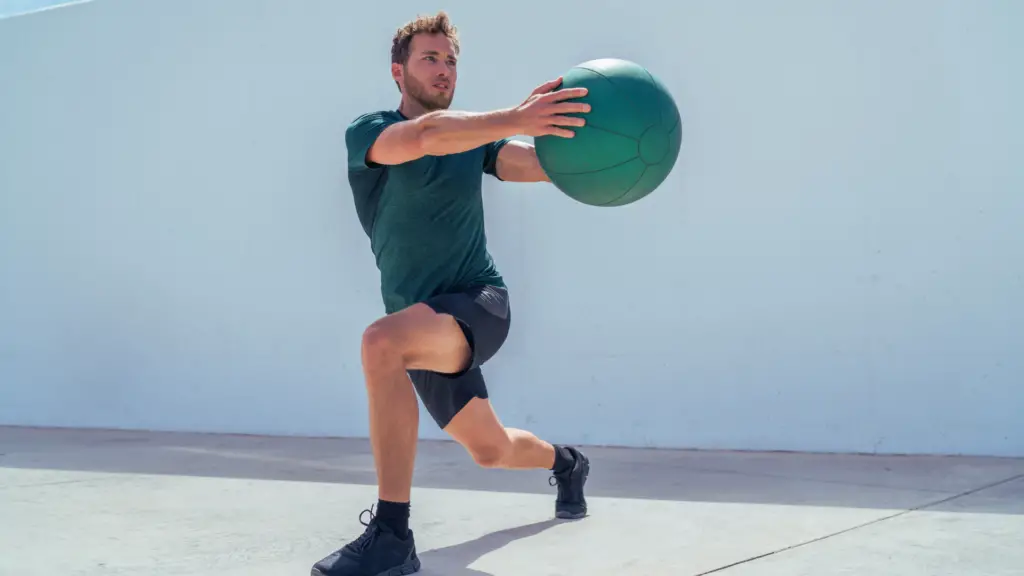
Proper Form and Technique
Form is everything: When performing any strength exercise, focus on maintaining proper form throughout the movement. This ensures that you are targeting the intended muscle groups and reducing the risk of injury.
Controlled movements: Avoid rushing through exercises. Instead, perform each repetition with controlled and deliberate movements to fully engage your muscles.
Seek professional guidance: If you’re new to strength training, consider working with a qualified coach or trainer. They can provide valuable feedback on your form and help you design a tailored program for your specific needs.
Frequency and Duration
Consistency is key: Aim for at least two to three strength training sessions per week to see meaningful improvements in your strength and performance.
Balanced approach: Allow your muscles time to recover between strength sessions. Avoid training the same muscle groups on consecutive days to prevent overtraining and promote muscle growth.
Adapt and progress: As you become more experienced and stronger, gradually increase the intensity, duration, and complexity of your strength training workouts.
Balancing Workouts and Rest Days
Integrate with swim workouts: Plan your strength training sessions strategically so they complement your swim-specific workouts. Avoid strength training on days when you have intense swim practices or competitions.
Rest and recovery: Adequate rest is crucial for muscle repair and growth. Incorporate rest days into your weekly schedule to give your body time to recover from intense training.
The Role of Periodization
Periodize your training: Periodization is a structured approach to training that involves dividing your training into phases to achieve peak performance at specific times. It allows you to build strength, power, and endurance while minimizing the risk of burnout or plateauing.
Pre-season, in-season, and off-season: Tailor your strength training program based on the different phases of your swim season. During the off-season, focus on building strengths and addressing weaknesses. In-season, maintain your strength while prioritizing swim-specific workouts.
Combine Strength Training with Dryland Workouts
Dryland workouts: Dryland exercises complement your strength training and swim-specific workouts. Incorporate bodyweight exercises, resistance band workouts, and core exercises into your dryland routine for additional strength gains.
Listen to Your Body
Recovery and injury prevention: Pay attention to your body and address any signs of fatigue or discomfort. Proper rest, nutrition, and self-care play a significant role in enhancing your performance and preventing injuries.
Building strength for swimming is an ongoing process that requires dedication and consistency. Remember that each swimmer is unique, so tailor your strength training program to meet your specific goals and needs. With a well-structured strength training regimen, you’ll be well on your way to becoming a stronger, faster, and more confident swimmer.
Looking for a workout partner who can help enhance your swim training? Check out our post on the best apps for swimmers and discover the best training partner to help take your performance to the next level. 🚀
Strength Training Programs for Swimmers
Now that you understand the importance of strength training and how to effectively build strength, let’s delve into specific strength training programs for swimmers that will help you optimize your performance so you can swim fast in the water. Whether you’re a beginner or an experienced swimmer looking to take your training to the next level, these programs are designed to cater to different skill levels and goals.
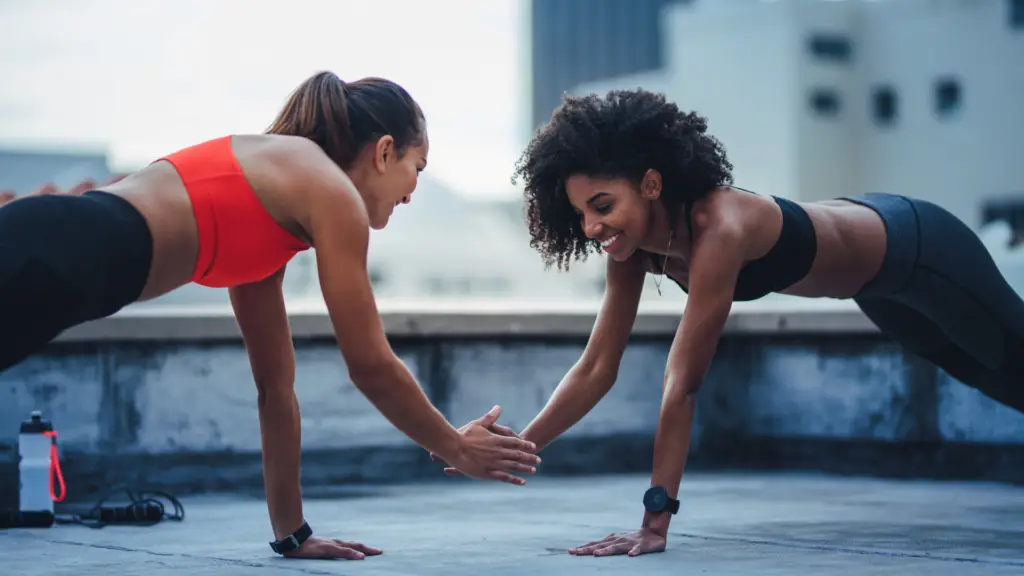
Beginner Strength Training Program
This beginner strength training program is designed to help you establish a solid foundation for your overall strength and swimming performance. Each workout targets different muscle groups to ensure balanced development. Remember to warm up before each session and cool down afterward. Perform each exercise with proper form and aim to gradually increase the intensity as you progress.
| Day | Workout |
|---|---|
| Monday | Full-Body Strength Training |
| Tuesday | Rest or Easy Swim |
| Wednesday | Core and Dryland Exercises |
| Thursday | Rest or Easy Swim |
| Friday | Upper Body Strength Training |
| Saturday | Rest or Light Swim |
| Sunday | Lower Body Strength Training or Rest |
Day 1 – Full-Body Strength Training
- Squat Jumps – 3 sets of 10 repetitions.
- Focus on explosive jumps, landing softly and immediately moving into the next jump.
- Push-ups – 3 sets of 10 to 12 repetitions.
- Perform push-ups with hands shoulder-width apart, maintaining a straight line from head to heels.
- Glute Bridges – 3 sets of 12 repetitions.
- Lie on your back with feet flat on the floor, lift your hips while squeezing your glutes, and lower back down.
Day 2 – Rest or Easy Swim
Day 3 – Core and Dryland Exercises
- Planks – 3 sets hold for 30 seconds to 1 minute each.
- Keep your body in a straight line from head to heels, engaging your core throughout.
- Arm Circles – 2 sets of 20 seconds forward circles and 20 seconds backward circles.
- Stand tall with arms extended to the sides, and make small circles with your arms.
- Donkey Kicks – 3 sets of 12 repetitions on each leg.
- Get on all fours, and kick one leg back and up, engaging your glutes.
Day 4 – Rest or Easy Swim
Day 5 – Upper Body Strength Training
- Dumbbell Bench Press – 3 sets of 10 to 12 repetitions.
- Lie on a bench or stability ball, hold dumbbells above your chest, and press them up.
- Reverse Flyes – 3 sets of 12 repetitions.
- Bend forward at the hips, holding dumbbells in each hand, and lift your arms to the sides.
- Arm Circles – 2 sets of 20 seconds forward circles and 20 seconds backward circles.
Day 6 – Rest or Light Swim
Day 7 – Lower Body Strength Training or Rest
- Squats – 3 sets of 10 repetitions.
- Stand with feet shoulder-width apart, squat down, keeping your knees in line with your toes.
- Lateral Lunges – 3 sets of 10 repetitions on each leg.
- Step to the side, bending your knee and keeping the other leg straight.
- Mini Band External Rotation – 2 to 3 sets of 12 to 15 repetitions on each arm.
- Attach a resistance band to a stationary object, hold the other end with one hand, and rotate your arm outward.
Intermediate Strength Training Program
The intermediate strength training program is designed to challenge your muscles further and enhance your swimming performance. It incorporates more challenging exercises and increases the training frequency to promote continued progress.
| Day | Workout |
|---|---|
| Monday | Upper Body and Core Strength Training |
| Tuesday | Rest or Moderate Swim |
| Wednesday | Lower Body and Dryland Exercises |
| Thursday | Rest or Moderate Swim |
| Friday | Full-Body Strength Training |
| Saturday | Rest or Moderate Swim |
| Sunday | Rest or Active Recovery Swim |
Day 1 – Upper Body and Core Strength Training
- Pull-ups – 3 sets of 8 to 10 repetitions
- Use an overhead bar or assisted pull-up machine if needed, and focus on controlled movements.
- Dumbbell Bench Press – 3 sets of 10 repetitions
- Lie on a bench, hold dumbbells at shoulder level, and press them up.
- Planks – 3 sets, hold for 45 seconds to 1 minute each
- Maintain a straight line from head to heels, engaging your core throughout.
Day 2 – Rest or Moderate Swim
Day 3 – Core and Dryland Exercises
- Squats – 4 sets of 10 repetitions
- Challenge yourself with increased weight or advanced squat variations.
- Glute Bridges – 3 sets of 12 repetitions
- Add a resistance band above your knees to intensify the exercise.
- Lateral Lunges – 3 sets of 10 repetitions on each leg
Day 4 – Rest or Moderate Swim
Day 5 – Upper Body Strength Training
- Medicine Ball Slam – 3 sets of 12 repetitions
- Hold a medicine ball overhead, slam it to the ground, and catch it on the rebound.
- Push-ups with Resistance Band – 3 sets of 10 to 12 repetitions
- Place a resistance band across your back and loop it around your hands during push-ups.
- Core Rotation with Medicine Ball – 3 sets of 10 repetitions on each side
- Hold a medicine ball, and rotate your torso from side to side, engaging your core.
Day 6 – Rest or Moderate Swim
Day 7 – Rest or Active Recovery Swim
Advanced Strength Training Program
The advanced strength training program is for competitive swimmers and those seeking peak performance. It incorporates challenging exercises and advanced training techniques to optimize strength and power.
| Day | Workout |
|---|---|
| Monday | Power and Explosive Exercises |
| Tuesday | Rest or Intense Swim |
| Wednesday | Upper Body Strength and Dryland Exercises |
| Thursday | Rest or Intense Swim |
| Friday | Lower Body Strength and Core Training |
| Saturday | Full-Body Strength Training or Intense Swim |
| Sunday | Rest or Active Recovery Swim |
Day 1 – Power and Explosive Exercises
- Box Jumps – 4 sets of 6 repetitions
- Jump onto a box or elevated surface, landing softly and stepping back down.
- Olympic Barbell Clean and Jerk – 5 sets of 3 repetitions
- A complex lift involving a clean from the ground to shoulders and a jerk overhead.
Day 2 – Rest or Intense Swim
Day 3 – Upper Body Strength and Dryland Exercises
- Pull-ups with Weighted Vest – 4 sets of 8 repetitions
- Wear a weighted vest during pull-ups to increase resistance.
- Handstand Push-ups – 4 sets of 6 to 8 repetitions
- Perform push-ups with your body in a handstand position against a wall.
- TRX Rows – 3 sets of 12 repetitions
- Use TRX straps to perform rows, targeting your back and biceps.
Day 4 – Rest or Intense Swim
Day 5 – Lower Body Strength and Core Training
- Barbell Back Squats – 4 sets of 8 repetitions
- Perform squats with a barbell on your shoulders, focusing on depth and form.
- Russian Twists with Medicine Ball – 3 sets of 12 repetitions on each side
- Sit on the floor, hold a medicine ball, and twist your torso from side to side.
- Planks with Leg Lift – 3 sets, hold for 30 seconds each
- Maintain a plank position while lifting one leg at a time.
Day 6 – Full-Body Strength Training or Intense Swim
Day 7 – Rest or Active Recovery Swim
Remember to progress at your own pace and consult with a qualified trainer or coach if you have any concerns. Enjoy your training and watch your strength and swimming performance soar!
Customizing Your Strength Training Routine
Remember that these programs are just templates, and you can customize them based on your individual needs and preferences. Feel free to adjust the sets, repetitions, and exercises to suit your goals and training capacity.
Tips for Creating a Personalized Strength Training Routine:
- Set Goals: Define your specific strength and swimming performance goals to tailor your program accordingly.
- Progressive Overload: Gradually increase the intensity and complexity of your workouts as you gain strength and experience.
- Incorporate Variety: Include a mix of exercises targeting different muscle groups to achieve well-rounded strength development.
- Listen to Your Body: Pay attention to how your body responds to training and adjust your routine if needed to prevent overtraining and injuries.
Strength Training Gear and Equipment
While many strength training exercises for swimmers can be done using bodyweight or simple equipment, some swimmers may find additional gear helpful in their workouts. Here are some popular options:
- Resistance Bands: Versatile and effective for strength training, especially for swimmers on the go.
- Medicine Balls: Great for adding resistance and power to your exercises.
- Dumbbells: Useful for targeting specific muscle groups and increasing strength.
- Swiss Ball: Excellent for core stability exercises and functional training.
- Pull-Up Bar: Ideal for upper body strength development and pull-up variations.
Remember, the most crucial aspect of any strength training program is consistency and dedication. Stick to your routine, challenge yourself, and the results will reflect in your improved swimming performance.
Interested in more free workouts? Check out our Swimming Workouts & Training category to discover more effective drills and exercises that will take your swimming skills to the next level. Whether you’re a beginner or a seasoned swimmer, these training resources will help you achieve your aquatic goals and excel in the pool. 🏊♂️💪
FAQs
Conclusion
Incorporating strength training exercises into your swimming routine is a game-changer for your performance and overall fitness. Whether you’re a recreational swimmer or a competitive athlete, the benefits of adding strength training to your regimen are undeniable. Remember to start with the basics, progressively challenge yourself, and remain consistent in your efforts.
As you embark on this journey, remember that there is no one-size-fits-all approach to strength training. Customize your workouts to align with your goals and listen to your body’s cues. Seek professional guidance if needed, and above all, enjoy the process of becoming a stronger, more confident swimmer.
So, dive in, embrace the challenge, and let strength training take your swimming to new depths!
And that concludes our comprehensive guide on strength training exercises for swimmers. We hope this article provides you with the knowledge and inspiration to take your swimming performance to the next level. If you have any further questions or need more advice, feel free to reach out to us. Happy swimming and happy training!
Note: Always consult a healthcare professional or certified trainer before starting any new exercise program, especially if you have pre-existing medical conditions or injuries.

